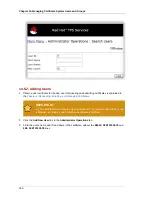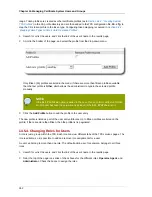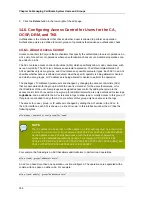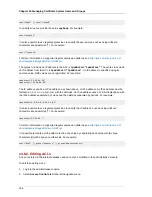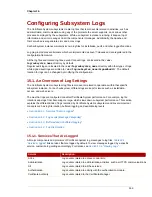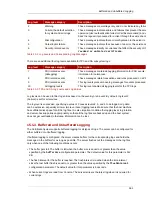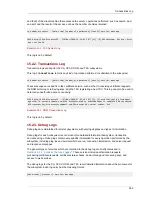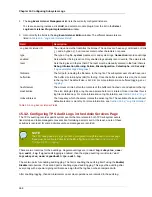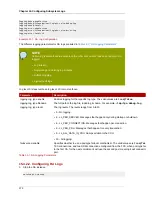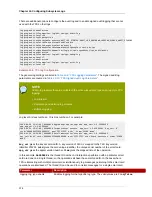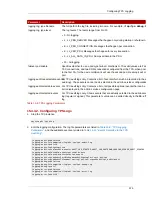
Chapter 15. Configuring Subsystem Logs
362
If the server is configured for unbuffered logging, the server flushes out messages as they are
generated to the log files. Because the server performs an I/O operation (writing to the log file) each
time a message is generated, configuring the server for unbuffered logging decreases performance.
Setting log parameters is described in
Section 15.3.1, “Configuring Logs in the Console (for the CA,
OCSP, DRM, and TKS)”
.
15.1.4. Log File Rotation
Log files are rotated when either of the following occur:
• The size limit for the corresponding file is reached. The size of the corresponding log file is equal to
or greater than the value specified by the
maxFileSize
configuration parameter. The default value
for this parameter is 100 KB.
• The age limit for the corresponding file is reached. The corresponding log file is equal to or older
than the interval specified by the
rolloverInterval
configuration parameter. The default value
for this parameter is 2592000 seconds (every thirty days).
When a log file is rotated, the old file is named using the name of the file with an appended time
stamp. The appended time stamp is an integer that indicates the date and time the corresponding
active log file was rotated. The date and time have the forms YYYYMMDD (year, month, day) and
HHMMSS (hour, minute, second).
Log files, especially the audit log file, contain critical information. These files should be periodically
archived to some backup medium by copying the entire
logs/
directory to an archive medium.
NOTE
The Certificate System does not provide any tool or utility for archiving log files.
The Certificate System provides a command-line utility,
signtool
, that signs log files before archiving
them as a means of tamper detection. For details, see
Section 15.5.4, “Signing Log Files”
.
Signing log files is an alternative to the signed audit logs feature. Signed audit logs create audit logs
that are automatically signed with a subsystem signing certificate. See
Section 15.5.1, “Configuring a
Signed Audit Log for a CA, OCSP, DRM, or TKS”
for details about signed audit logs.
By default, rotated log files are not deleted.
15.2. Certificate System Logs
Certificate System subsystems keep several different kinds of logs, which provide specific depending
on the type of subsystem, types of services, and individual log settings. The kinds of logs that can be
kept for an instance depend on the kind of subsystem that it is.
15.2.1. System Log
Subsystem logs are kept for the CA, OCSP, DRM, and TKS subsystems.
This log,
system
, records information about requests to the server (all HTTP and HTTPS requests)
and the responses from the server. Information recorded in this log includes the IP address (both IPv4
Summary of Contents for CERTIFICATE SYSTEM 8.0 - ADMINISTRATION
Page 42: ...20 ...
Page 43: ...Part I Setting up Certificate Services ...
Page 44: ......
Page 190: ...168 ...
Page 208: ...186 ...
Page 223: ...Part II Additional Configuration to Manage CA Services ...
Page 224: ......
Page 256: ...234 ...
Page 270: ...248 ...
Page 280: ...258 ...
Page 292: ...270 ...
Page 293: ...Part III Managing the Subsystem Instances ...
Page 294: ......
Page 408: ...386 ...
Page 438: ...416 ...
Page 439: ...Part IV References ...
Page 440: ......
Page 503: ...Netscape Defined Certificate Extensions Reference 481 OID 2 16 840 1 113730 13 ...
Page 504: ...482 ...
Page 556: ...534 ...
Page 564: ...542 ...



